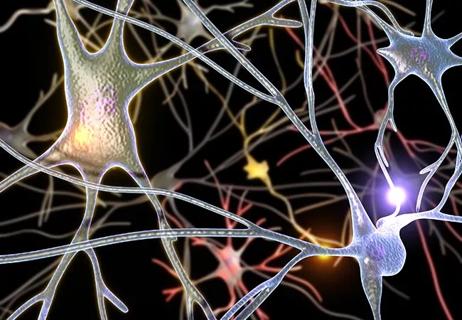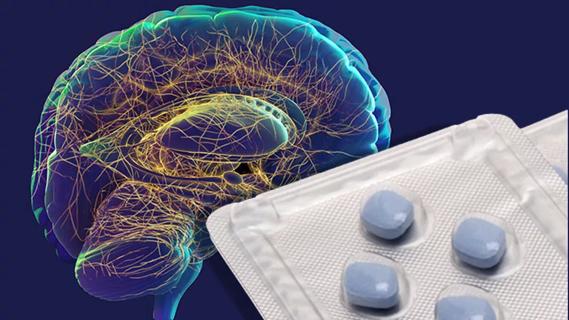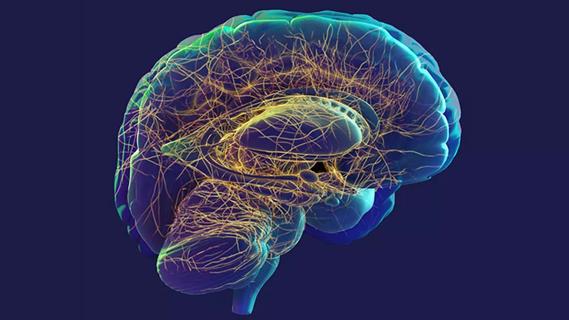Advertisement
A quest to reduce inflammation, offer neuroprotection and enhance repair

While tremendous progress has been made in treating relapsing-remitting multiple sclerosis (MS) with effective immunotherapeutic agents, once a patient enters the secondary progressive stage of the disease, treatment options dwindle dramatically.
Advertisement
Cleveland Clinic is a non-profit academic medical center. Advertising on our site helps support our mission. We do not endorse non-Cleveland Clinic products or services. Policy
Cleveland Clinic’s Bruce D. Trapp, PhD, Chairman, Department of Neurosciences, aims to change that scenario with the help of a five-year, $1.7 million grant from the National Institute of Neurological Disorders and Stroke that supports his lab’s brain research.
“Anti-inflammatory therapies for relapsing-remitting MS inhibit the immune system that attacks the brain to demyelinate axons in the white matter,” Dr. Trapp says. “These drugs are effective at slowing down MS, but they do not stop progression of the disease.”
Patients eventually develop secondary progressive MS. In this form, decline is likely the result of neurodegeneration of axons or neurons in the gray matter, or cerebral cortex, the brain’s control center, Dr. Trapp explains, adding that the classical view of MS as a white matter disease has recently expanded to include gray matter demyelination.
Unlike in white matter, there is no massive influx of immune cells into the gray matter, he notes. So the question becomes how does demyelination occur in the cerebral cortex? Dr. Trapp and colleagues will look for patterns and try to define the mechanism of lesion development in the cerebral cortex. He and his team described the neuropathology in demyelination of the cerebral cortex in MS a number of years ago resurrecting the concept for further study.

Subpial cortical lesions result from a loss of myelin that extends from the surface of the brain into deeper layers of the cerebral cortex. These extensive lesions likely contribute to the functional disability that develops in patients with multiple sclerosis.
Advertisement
One problem in studying MS in the cerebral cortex is that lesions there are not visible with current imaging techniques. Unlike in the brain’s white matter, in which contrast material can penetrate the blood-brain barrier, permitting visualization of lesions on MRI, in gray matter this breakdown does not occur and cortical lesions are not visible on MRI. As a result, this study necessitates postmortem examination of MS brains.
Over the last 20 years, Cleveland Clinic has collected approximately 160 donated MS brains, most of which underwent MRI. The collection is one of the largest in the world and the only one that includes MRI analyses.
“The NIH grant will allow us to look at the MS brain pathologically and histologically to better understand how myelin is being destroyed in the cerebral cortex,” Dr. Trapp states.
Specifically, Dr. Trapp’s team will try to explain the greater loss of myelin and poorer myelin repair processes seen in MS patients and define the role of suspect microglia cells.
“We think there are two things involved in demyelination in the cerebral cortex of MS patients,” Dr. Trapp explains. “Myelin loss normally occurs in the cerebral cortex with age, but the myelin also undergoes repair. In the MS patient, that loss is greater and the repair process is poorer.”
Microglia cells are resident immune cells in the brain that normally play a protective, phagocytic role, he says. “The question is whether in MS their phenotype or behavior changes to a toxic or destructive role that contributes to demyelination. We will try to isolate microglia cells from cortical lesions and molecularly phenotype them to determine whether they mediate myelin destruction or inhibit repair.”
Advertisement
Dr. Trapp also hopes his research project contributes to improved understanding of cognitive decline and memory impairment in MS by helping delineate the sequence of changes in demyelination in the cerebral cortex.
Anti-inflammatory therapy has limits due to serious side effects, so neuroprotection and remyelination or repair therapies are a new focus of MS translational research, Dr. Trapp notes, adding that scientific understanding of remyelination is further along than is the understanding of neuroprotection. Two clinical trials of remyelinating compounds are underway, with more expected in the next five to six years. He hopes his research serves to fast-forward such clinical investigations.
“We still have a lot to learn about the pathogenesis of MS,” Dr. Trapp concludes. “But one day, therapeutics will extend beyond the current battery of anti-inflammatories. I hope we will develop an effective combinatorial approach to MS treatment that includes one agent to reduce inflammation, one to provide neuroprotection and another to enhance repair. My goal is to help develop therapies that can be given to patients early in their disease that will keep them cognitively intact and out of wheelchairs.”
Advertisement
Advertisement

Understanding TE involvement is a key to developing new treatments

Study aims to inform an enhanced approach to exercise as medicine

$3.2 million grant will fund use of calcium-based imaging to record neuronal activity in ischemia model

New phase 1 trial showcases Neurological Institute’s interdisciplinary study capabilities

Chronic stress, asymptomatic disease affect different brains differently

Real-world claims data and tissue culture studies set the stage for randomized clinical testing

New grant-funded investigation illustrates impact and reach of Cleveland Clinic Brain Study

How the new longitudinal investigation could become the Framingham Heart Study of brain health